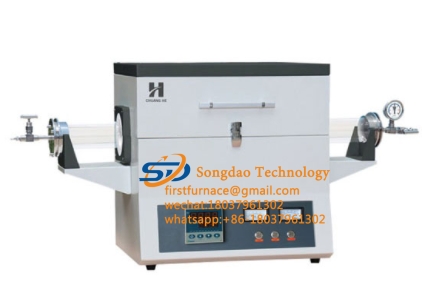- 21
- Feb
Mjere opreza za rad peći s vakuumskom atmosferom
Mjere opreza za rad peć u vakuumskoj atmosferi
A vacuum atmosphere furnace is a furnace type that can be vacuumed and can pass the atmosphere. It has many different furnace types such as box type, tube furnace, and lifting furnace. Although there are many types, the precautions during operation are not bad. Below Let’s find out:

1. Visokotemperaturne peći u vakuumu ne mogu se preopteretiti. Maksimalna radna temperatura odnosi se na dozvoljenu temperaturu površine elementa u vakuumu, a ne na temperaturu materijala za grijanje ili temperaturu oko grijaćeg elementa. Treba napomenuti da je temperatura samog vakumskog grijača za 100°C viša od temperature okolnog medija ili zagrijane temperature.
2. When measuring the temperature uniformity of the vacuum atmosphere furnace, pay attention to the positioning method of the temperature measuring contact and the distance from the heating element. Use brushes, brooms or compressed air, vacuum cleaners, etc. to clean the furnace in the atmosphere furnace frequently (at least daily or before each shift) to prevent impurities such as oxide scale in the furnace from falling on the heating elements, short-circuiting, and even burning molybdenum heating rods . The bottom plate, molybdenum heating rod, furnace insulation layer and other heat-resistant steel components should be cleaned every time they are used. Knocking is strictly prohibited, and their oxide scale can be carefully removed.
3. Nakon što se peć zagrije, vakuum sistem se ne može naglo uništiti, a kamoli otvoriti vrata peći. Imajte na umu da prekidač vakuumskog mjerača treba isključiti prije punjenja atmosfere kako bi se spriječilo starenje vakuumskog mjerača. Kada je temperatura viša od 400℃, ne smije se brzo hladiti. Izbjegavajte reakcije između grijaćih elemenata i proizvoda, posebno ako bakar, aluminij, cink, kalaj, olovo, itd. dođu u kontakt sa vakuumskim grijaćim elementima, bilo da se radi o finom prahu, rastopljenoj tekućini ili pari, itd., kako biste spriječili eroziju i stvaranje „jame“ na površini električnog grijača. , Poprečni presjek postaje manji, a nakon pregrijavanja izgara. Kada se utvrdi da su dijelovi prijenosa zaglavljeni, neprecizni u granici i neuspjeh u kontroli, treba ih odmah eliminirati i nemojte forsirati rad kako biste izbjegli oštećenje dijelova.
4. Čelične komponente otporne na toplinu, kao što su donja ploča peći s vakuumskom atmosferom, šipke za grijanje molibdena, izolacijski sloj peći, itd. treba očistiti svaki put kada se koriste. Kucanje je strogo zabranjeno, a oksidni kamenac se može pažljivo ukloniti. Ako se kamenac od željeznog oksida i druge nečistoće ne uklone na vrijeme, rastopljeno područje će se zapaliti sa izolacijskim slojem, uzrokujući topljenje molibdenske žice.
5. After the furnace heats up, the vacuum system cannot be suddenly destroyed, let alone open the furnace door. Note that the vacuum gauge switch should be turned off before filling the atmosphere to prevent the vacuum gauge from aging. When the temperature is higher than 400℃, it must not be cooled rapidly. For the vacuum heating element, it is easy to cause oxidation when the temperature is high, the vacuum degree is not good, and the cold and heat changes are large. For molybdenum heating furnace, during normal use and maintenance, it should be cooled to below 200°C before the protective nitrogen can be stopped. The furnace door can only be opened below 80°C.
6. The cooling system is an important part of the vacuum atmosphere furnace. The cooling water circuit should be kept unobstructed, otherwise the water temperature will rise and cause the machine to stop. This is a problem that is often overlooked when the atmosphere furnace is working. It may cause major damage to the high-temperature vacuum atmosphere furnace when unattended. The purpose of treating the cooling water with the aid of biological decomposition and chemical methods is to keep the minerals in suspension and reduce the accumulation of sediment in the rubber tube, the serpentine tube and the water jacket, so that the water can flow smoothly. This is generally done by an automatic device, which can monitor the conductivity of the water, automatically replenish chemical agents, flush the waterway, and add fresh water.
